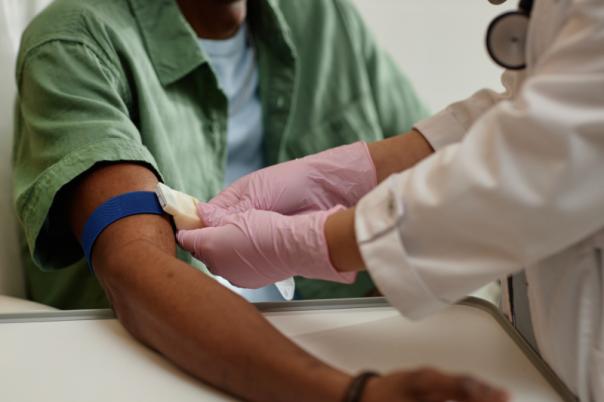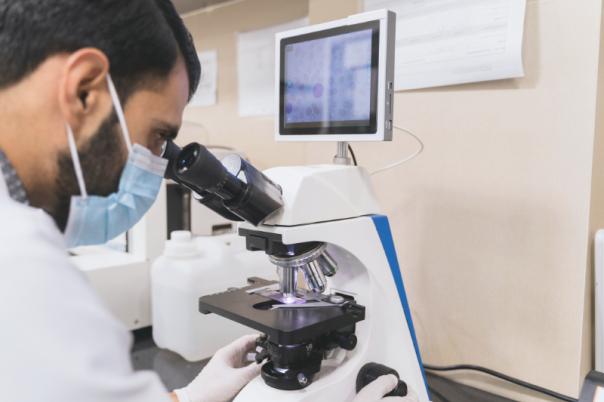How multi-omics, longitudinal sampling, and interpretable AI are reshaping precision oncology—from early detection to real-world translation.
Oxford Global hosted a thought leadership webinar with Cancer Research UK’s National Biomarker Centre on the convergence of circulating cell-free DNA (cfDNA), tumor immunology, and translational science. Led by Dominic Rothwell, Deputy Director of the National Biomarker Centre and collaborator with Cancer Research Horizons, the session brought together voices from research, biotech, and technology transfer to discuss how new biomarker tools are moving from discovery to clinical reality.
Their conclusion was clear: the future of biomarker science lies not in single analytes, but in multi-omic, longitudinal, and AI-enabled strategies that unite molecular, cellular, and immunological insights into one coherent framework.
Why cfDNA Matters
Liquid biopsy has evolved from a curiosity to a cornerstone of precision oncology. cfDNA—and its tumor-derived component, circulating tumor DNA (ctDNA)—offers several key advantages:
- Real-time biology: ctDNA has a short half-life (around 90 minutes), providing a live snapshot of disease activity rather than a static record.
- Global disease coverage: Because blood traverses all tissues, ctDNA can capture heterogeneity across lesions, revealing mutations a single tissue biopsy might miss.
- Ease of serial sampling: Simple blood draws allow continuous monitoring for resistance, relapse, or minimal residual disease (MRD).
As Rothwell emphasized, “cfDNA gives you the here-and-now—a global, real-time signal you can sample repeatedly.”
However, the technology faces limits. Tumor DNA can represent less than one percent of total cfDNA, the molecules are fragmented, and yield is low (around five nanograms per millilitre of blood). Achieving the sensitivity needed to detect meaningful change remains technically demanding, especially in early-stage or low-shedding tumors such as glioma and renal cancer.
Tissue and Liquid: Complementary, Not Competing
Liquid biopsy is not replacing tissue—it’s completing it. Tissue samples reveal the tumor microenvironment, immune infiltration, and spatial context, while cfDNA provides a systemic, repeatable view of molecular evolution.
Panelists agreed that the synergy between the two will define the next decade. Studies designed to collect both tissue and serial blood samples at key time points—diagnosis, during therapy, and at relapse—can link systemic signals to local biology. The combination is essential for understanding resistance mechanisms and immune interactions that drive patient outcomes.
Early Detection and the Immune Signal
Detecting early cancer through cfDNA remains one of medicine’s toughest challenges. In early disease, tumor DNA in the bloodstream is vanishingly scarce. Yet researchers are now observing systemic immune and proteomic changes that appear before tumor DNA becomes measurable.
This finding reframes early detection: instead of hunting for faint tumor fragments, scientists might track immune or inflammatory signatures as sentinels of disease emergence. As panelist Natalie Doleman from Cancer Research Horizons noted, “We can sometimes pick up changes in the immune system or plasma proteome before we ever detect tumor DNA.”
Such shifts hint at the possibility of “immune-first” diagnostics that detect early immune engagement with microscopic cancers—long before structural imaging or genomics can.
Immuno-Oncology and the Search for Predictive Biomarkers
Checkpoint inhibitors and CAR-T therapies have revolutionized oncology, but only a minority of patients respond. The field urgently needs predictive biomarkers to match patients to therapies and spare others from toxicity.
Despite years of research, no single biomarker—neither PD-L1 expression nor tumor mutational burden—predicts response reliably across cancers. The consensus from the panel was that multi-modal signatures offer the best path forward. Combining tumor features (mutations, methylation, copy number) with immune metrics (T-cell subsets, TCR diversity) and plasma proteomics may finally unlock predictive power.
Longitudinal immune tracking adds another dimension. Expanding or disappearing T-cell clones in the blood can mirror what’s happening in the tumor microenvironment. Weill Cornell’s Taha Magoo described studies tracing T-cell receptor (TCR) clones migrating from blood into tumors—“molecular proof that peripheral changes can mirror intratumoral immune engagement.” Such data could eventually enable non-invasive monitoring of response, resistance, and even immune-related toxicity.
Emerging Layers: cfRNA and Proteomics
Beyond DNA, other blood-based analytes are gaining traction. Cell-free RNA (cfRNA), once dismissed as too unstable, can now be stabilized and sequenced reliably, revealing gene-expression patterns and organ-specific transcriptional activity. Plasma proteomics, powered by high-sensitivity mass spectrometry and proximity assays, provides additional context on inflammation, immune signaling, and organ health.
Together, these layers transform a routine blood draw into a multi-omic snapshot—capturing what the tumor is, what it’s doing, and how the host immune system is responding. As Rothwell noted, “We’re learning how to extract the maximum information from a single sample—DNA, RNA, proteins, and immune cells—to build a truly integrated picture.”
From Bench to Bedside: Real-World Translation
Rothwell’s team highlighted two translational projects moving toward clinical testing:
- Methylation-based tissue-of-origin assay: By analyzing ctDNA methylation signatures in blood, the test can identify the likely origin of cancers of unknown primary (CUP). This information can direct targeted therapy and dramatically improve outcomes for patients who currently have limited options. A clinical trial is now in development.
- Relapse-risk signature in lung cancer: In collaboration with CRUK’s Manchester Institute, researchers are validating a gene-expression biomarker that predicts relapse risk after surgery. The goal is to guide follow-up intensity and enable earlier intervention in high-risk patients.
These examples illustrate how cfDNA assays are evolving beyond mutation detection toward functional and prognostic applications.
AI: The Interpreter of Complexity
The flood of data from cfDNA, cfRNA, proteomics, and immune profiling makes AI indispensable. But all speakers stressed the need for “interpretable AI”—models that clinicians can understand and regulators can audit.
Machine learning enables pattern discovery and risk prediction, but algorithms must meet clinical standards of transparency, reproducibility, and validation. “AI will be essential—provided it’s interpretable and regulator-ready,” Rothwell said. The field is exploring explainable models that show which features drive a prediction and federated learning that allows institutions to share insights without sharing raw data.
Simplifying Complexity for the Clinic
Discovery science thrives on complexity, but clinical translation demands simplicity, speed, and affordability. Moving from multi-omic discovery to a deployable test requires de-complexification—boiling down hundreds of features into a concise, validated panel.
Panelists offered a practical roadmap:
- Design for simplicity early. Build discovery studies knowing that final panels will need to be compact and standardized.
- Standardize pre-analytics. Tube type, processing time, and storage can alter cfDNA quality more than biology itself.
- Define decision thresholds. Reports must translate molecular data into clear clinical actions—start, stop, or adjust therapy.
- Plan for regulation and cost. Validation, reproducibility, and reimbursement evidence must be embedded from the start.
Data Sharing and Governance
Another recurrent theme was data access and collaboration. Multi-omic datasets are expensive to generate and ethically complex to share. Current legal and contractual frameworks lag behind the pace of research, often delaying collaborations for months.
The panel called for standardized data-sharing agreements, privacy-preserving analytics, and the inclusion of domain experts in shaping new health-data governance frameworks such as Europe’s Health Data Space. Magoo warned that “our legal systems and consent frameworks are moving too slowly for the science,” highlighting the need to balance patient protection with research agility.
The Next Five Years
Over the next half-decade, cfDNA and immunology research will likely evolve along several fronts:
- Multi-analyte blood tests that combine ctDNA, cfRNA, and immune profiling will become routine in advanced cancer care.
- Interpretable AI will integrate these data streams into concise clinical reports.
- Remote and miniaturized sampling (e.g., dried blood spots) will extend monitoring beyond hospitals.
- Regulatory frameworks will mature to accommodate AI-enabled, multi-modal diagnostics.
- Large-scale data consortia will accelerate validation across diverse populations.
The direction is unmistakable: from measuring isolated signals to mapping dynamic systems.
The Take-Home Message
The field of biomarker development is moving beyond the single-marker mindset. The future belongs to composite, longitudinal, explainable biomarkers that integrate tumor, immune, and host data in real time.
As Rothwell summarized, “We’re spoiled by technology—the challenge now is to turn information into impact.”
The combination of cfDNA, immunological insight, and AI interpretation is poised to do exactly that, shifting precision oncology from static classification to continuous decision-making.
If data governance, regulatory clarity, and affordability can keep pace, the next generation of blood-based biomarkers won’t just describe disease—they’ll guide therapy, monitor response, and personalize care across the entire patient journey.
In short, the question is no longer whether we can measure these signals, but whether we can make them work—safely, simply, and everywhere.








